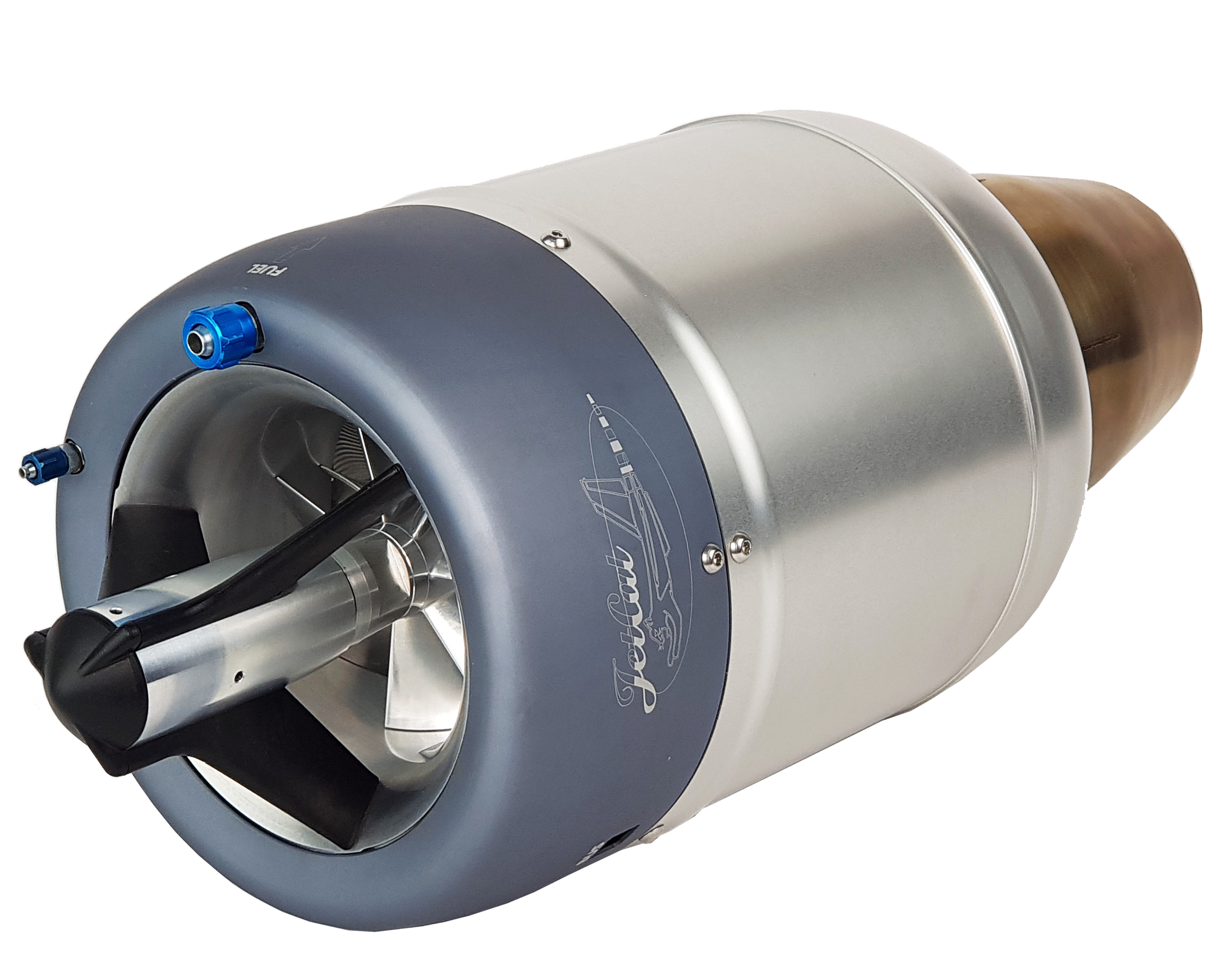You write:
“VTOL lift jets were designed 60 years ago with thrust/weight ratios of 40
jet exhaust velocity was presumably rather lower than the conventional”
In the case of the JetCat P550 turbine of the DeltaWing, the maximum thrust is 550N, while its weight (without fuel) is 4.9Kg = 49N, giving an impressive thrust to weight ratio of 11:1.

But this is the half truth.
Because the P550 needs a lot of fuel to operate for a “decent” duration of time, lowering substantially the “net” thrust-to-weight-ratio and the net take-off thrust.
Let’s make a few calculations:
For a 20 minutes flight at maximum thrust, the take-off weight (including the required fuel) of the P550 becomes:
49N (its own weight) + 1600ml/min * 0.008N/ml (fuel specific density) * 20min = 305N,
with the required fuel (for one turbine) being 32lit (fuel weight: 256N).
This leaves a net thrust of 550N – 305N = 245N ( ~25Kg, 55lb) at take-off, making the “net thrust to weight ratio” 1.8:1 at take-off.
If the flight duration halves (10 minutes), the “net thrust to weight ratio” (including only the turbine and the required fuel) increases to 3.1:1 at take-off.
If the duration doubles (40 minutes at maximum thrust), the take-off weight of the P550 (including the fuel) becomes:
49N (its own weight) + 1600ml/min * 0.008N/ml (fuel specific density) * 40min = 561N,
which means that even without lifting any other weight than its own weight and the weight of the fuel required for the flight, it cannot take-off at all (thrust to weight ratio 0.98:1).
From a different viewpoint.
Suppose the pilot weight plus the “dry” (no fuel included) DeltaWing weight is 120Kg / 1200N (only the 4 turbines weigh ~20Kg).
For a 20 minutes flight at maximum thrust you need, according the previous calculations, 4*256N = 1024N of fuel (or 128liters / 35 gallons of fuel), which gives a total take-off weight of 2224N, which is above the total thrust (2200N).
That is, even if pilot’s legs / back can bear the 220Kg total weight at take off, the DeltaWing cannot take off, at all.
That is, the impressive thrust to weight ratio of the jet turbines says the half truth; because the less than low “overall” fuel efficiency of the jet turbines requires a lot of fuel for a decent flight duration (or for a decent flight range).
Compare the above with an OPRE Tilting driving a pair of contra rotating propellers:

For short flight durations (say, less than 5 minutes), and forgetting the ownership and running cost, the extreme noise etc, the turbines appear a better choice.
But for longer flight durations, the piston engine driving propellers is better, or far better, or the only solution.
Imagine a pair of such propulsion units replacing the JetCat P550 turbines of Rossy’s DeltaWing.
Thanks
Manolis Pattakos




